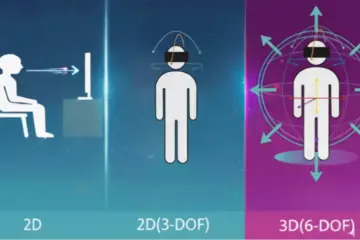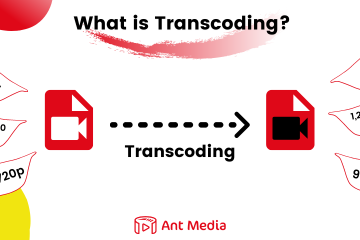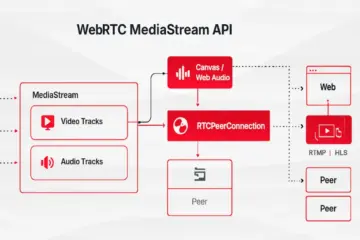The concept of smart cities has moved from futuristic vision to present-day reality, and at the heart of this transformation is real-time video streaming. IP camera streaming plays a pivotal role in enhancing city infrastructure, security, emergency response, and traffic management. These connected camera systems provide continuous insights that help governments, businesses, and citizens make better decisions.
This article—developed in collaboration with video streaming experts—dives deep into the top real-world use cases for IP camera streaming in smart cities and security applications. Whether you’re a policymaker, systems integrator, or urban planner, this guide will show how IP streaming is elevating safety, visibility, and efficiency across the board.
For foundational technology and implementation details, visit our IP Camera Streaming.

City-Wide Surveillance and Crime Prevention
IP camera streaming enables centralized surveillance of city zones, neighborhoods, and public areas in real time. High-definition video can be analyzed for suspicious activity, unauthorized access, or potential threats.
Benefits:
- Immediate threat detection and response coordination
- Real-time alerts integrated with AI and facial recognition
- Reduction in crime rates through proactive monitoring
Example: Cities like London and Singapore use expansive CCTV networks integrated with IP streaming to deter and solve crimes faster.
Pro Tip: When paired with cloud-based analytics, city officials can access and manage video feeds from anywhere, reducing reliance on local hardware.
Traffic Flow Optimization and Incident Detection
Real-time traffic monitoring is essential for modern urban planning. IP cameras mounted at intersections, highways, and pedestrian crossings provide a live feed of vehicle and pedestrian movement.
Benefits:
- Real-time rerouting suggestions via traffic control centers
- Faster response to accidents and bottlenecks
- Enhanced pedestrian and cyclist safety
Use Case: In cities like Stockholm, smart traffic signals adjust in real time based on data collected from IP cameras, significantly reducing congestion.
Emergency Response & Disaster Management
During natural disasters, fire outbreaks, or public emergencies, IP camera streaming becomes a lifeline for first responders. Real-time video offers on-ground visibility that dramatically improves coordination.
Benefits:
- Visual situational awareness for emergency teams
- Reduced response times due to accurate incident localization
- Historical footage for post-incident analysis
Example: During the 2023 floods in Jakarta, IP camera feeds helped city management coordinate evacuations and resource deployment.
Advanced Feature: Integrating drones with IP camera streaming can offer aerial surveillance over hard-to-reach or hazardous zones.
Public Transportation Monitoring and Passenger Safety
Buses, subways, and trains equipped with IP cameras contribute to safer travel experiences. Real-time feeds help operators manage driver behavior, detect overcrowding, and monitor for theft or violence.
Benefits:
- Enhanced safety for passengers and transport staff
- Evidence collection in case of disputes or incidents
- Reduced vandalism and public property damage
Use Case: New York City’s MTA uses IP camera streaming to monitor over 6,000 buses in real time, enhancing both performance and safety.
Smart Building & Infrastructure Security
Public infrastructure such as government offices, schools, and healthcare facilities are increasingly relying on IP cameras for entry management and facility monitoring.
Benefits:
- Access control with license plate or facial recognition
- Activity logging and compliance reporting
- Quick detection of unauthorized access or loitering
Expert Insight: According to the National Institute of Standards and Technology (NIST), combining video surveillance with biometric verification significantly enhances building security protocols.
Environmental Monitoring and Sustainability
Yes, IP cameras also play a role in monitoring environmental health. They help detect illegal dumping, monitor air quality (via visual sensors), and ensure proper waste management.
Benefits:
- Enforcing environmental regulations
- Remote monitoring of industrial zones
- Supporting smart lighting and water usage analytics
Case in Point: In Barcelona, smart waste management systems use camera feedback to identify full bins and optimize collection routes, reducing fuel use and emissions.
Crowd Management During Events and Festivals
Smart cities often host large events, concerts, and protests that require meticulous crowd control. IP camera streaming offers live analytics on crowd density, movement, and potential safety risks.
Benefits:
- Prevent stampedes or overcrowding
- Improve entry and exit flows
- Monitor high-risk zones in real time
Example: Tokyo utilized IP cameras and AI video analytics to manage massive foot traffic during the Olympics, ensuring crowd safety and public order.
School and Campus Security
Educational institutions are leveraging real-time IP camera streaming to create safer learning environments. Cameras monitor hallways, entrances, and open grounds.
Benefits:
- Prevent bullying and campus violence
- Ensure perimeter security and visitor screening
- Enable rapid lockdown protocols if needed
Note: Many schools integrate IP streaming with emergency communication systems for real-time coordination with law enforcement.
Integration with AI for Predictive Policing and Risk Analysis
AI-powered IP camera systems can analyze patterns and predict high-risk activities before they occur. These systems are already in pilot phases in various smart cities worldwide.
Benefits:
- Crime forecasting based on behavioral patterns
- Early warning systems for suspicious activities
- Reduced false alarms with deep learning models
Why Ant Media is the Ideal Platform for IP Camera Streaming
Ant Media offers a robust, low-latency streaming infrastructure specifically designed for real-time IP camera streaming in smart cities and security environments. It supports:
- WebRTC and RTMP ingestion
- Scalability across thousands of cameras
- End-to-end encryption and security
- Easy integration with AI video analytics tools
Frequently Asked Questions (FAQs)
Q1. How secure is IP camera streaming in public spaces?
Trusted platforms like Ant Media use encryption, access control, and firewalls to ensure end-to-end video security.
Q2. Can IP camera streams be analyzed by AI in real time?
Yes, most modern IP camera systems support real-time AI analysis for facial recognition, anomaly detection, and behavioral pattern tracking.
Q3. Is it legal to stream public camera footage?
Laws vary by jurisdiction. Typically, cities must post visible signage and follow privacy and data protection laws.
Q4. What internet bandwidth is required for high-quality streaming?
It depends on resolution and frame rate. For example, 1080p streams usually require 3–5 Mbps per stream.
Q5. Can older analog cameras be converted to IP streaming?
Yes, with IP encoders or hybrid DVR/NVR systems, you can bring analog CCTV into modern IP streaming networks.
Conclusion: Real-Time Streaming Is the Backbone of Smart Cities
From emergency response to crime prevention, from environmental monitoring to public transportation, IP camera streaming is driving the smart city revolution. It connects stakeholders, informs decision-making, and enhances safety across every layer of urban life.
If you’re looking to implement a reliable, secure, and scalable video streaming infrastructure, look no further than Ant Media’s IP Camera Streaming Solutions.
Empower your smart city with real-time vision. The future of urban security starts now.


